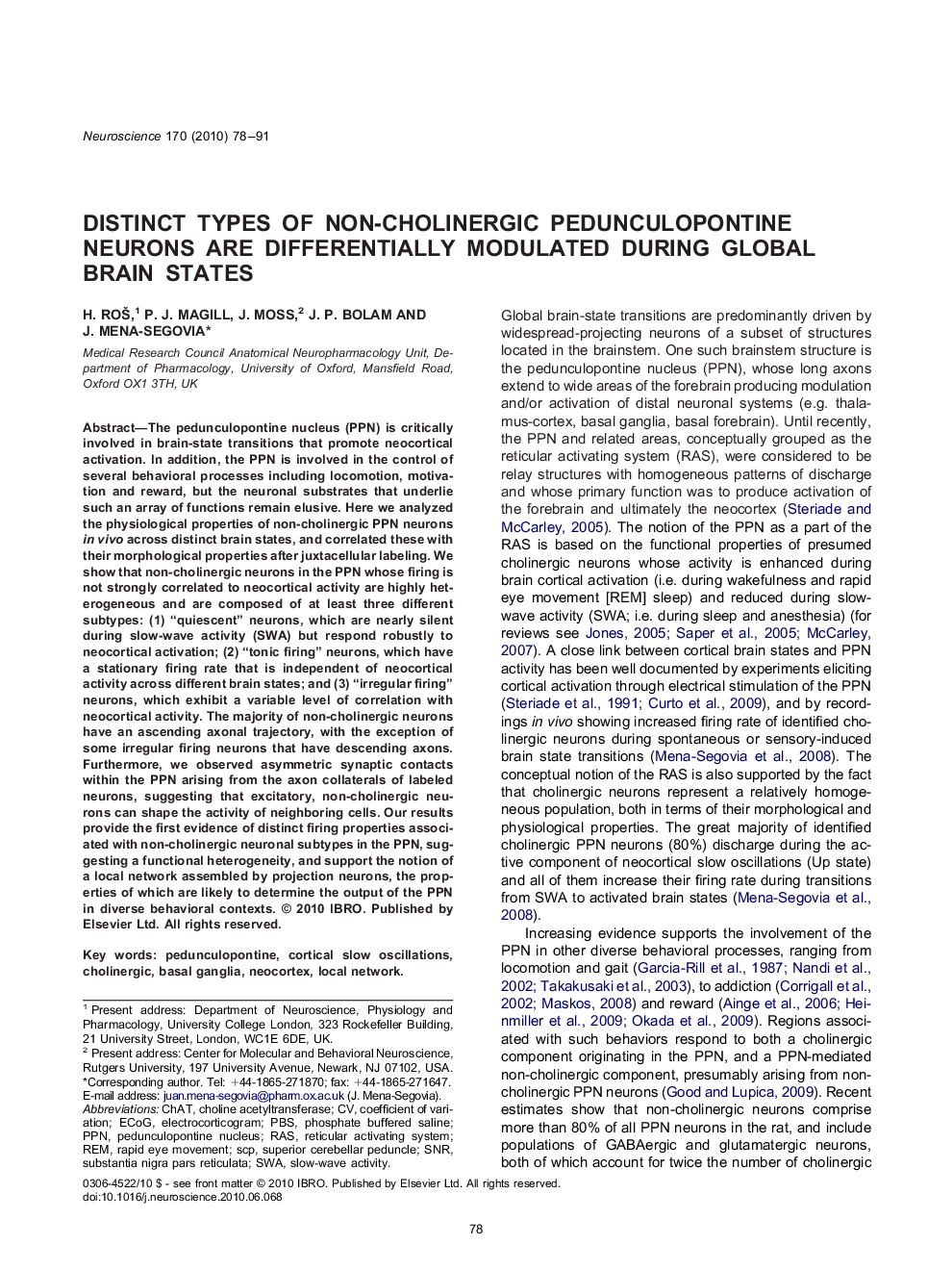| Article ID | Journal | Published Year | Pages | File Type |
|---|---|---|---|---|
| 6277176 | Neuroscience | 2010 | 14 Pages |
Abstract
The pedunculopontine nucleus (PPN) is critically involved in brain-state transitions that promote neocortical activation. In addition, the PPN is involved in the control of several behavioral processes including locomotion, motivation and reward, but the neuronal substrates that underlie such an array of functions remain elusive. Here we analyzed the physiological properties of non-cholinergic PPN neurons in vivo across distinct brain states, and correlated these with their morphological properties after juxtacellular labeling. We show that non-cholinergic neurons in the PPN whose firing is not strongly correlated to neocortical activity are highly heterogeneous and are composed of at least three different subtypes: (1) “quiescent” neurons, which are nearly silent during slow-wave activity (SWA) but respond robustly to neocortical activation; (2) “tonic firing” neurons, which have a stationary firing rate that is independent of neocortical activity across different brain states; and (3) “irregular firing” neurons, which exhibit a variable level of correlation with neocortical activity. The majority of non-cholinergic neurons have an ascending axonal trajectory, with the exception of some irregular firing neurons that have descending axons. Furthermore, we observed asymmetric synaptic contacts within the PPN arising from the axon collaterals of labeled neurons, suggesting that excitatory, non-cholinergic neurons can shape the activity of neighboring cells. Our results provide the first evidence of distinct firing properties associated with non-cholinergic neuronal subtypes in the PPN, suggesting a functional heterogeneity, and support the notion of a local network assembled by projection neurons, the properties of which are likely to determine the output of the PPN in diverse behavioral contexts.
Keywords
PBSPedunculopontineSCPRASSNRECoGSubstantia nigra pars reticulataSWAREMsuperior cerebellar peduncleelectrocorticogramrapid eye movementreticular activating systemLocal networkCoefficient of Variationbasal gangliaPhosphate buffered salineslow-wave activityPPNneocortexPedunculopontine nucleusChATcholine acetyltransferaseCholinergic
Related Topics
Life Sciences
Neuroscience
Neuroscience (General)
Authors
H. Roš, P.J. Magill, J. Moss, J.P. Bolam, J. Mena-Segovia,
